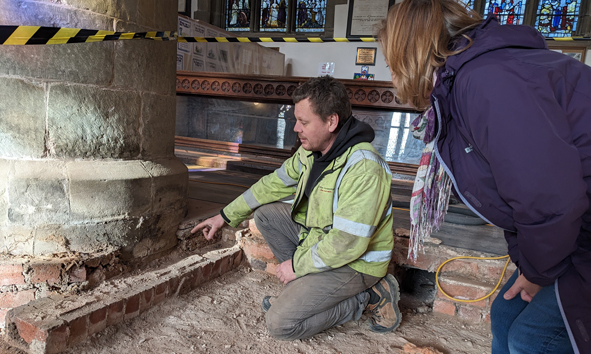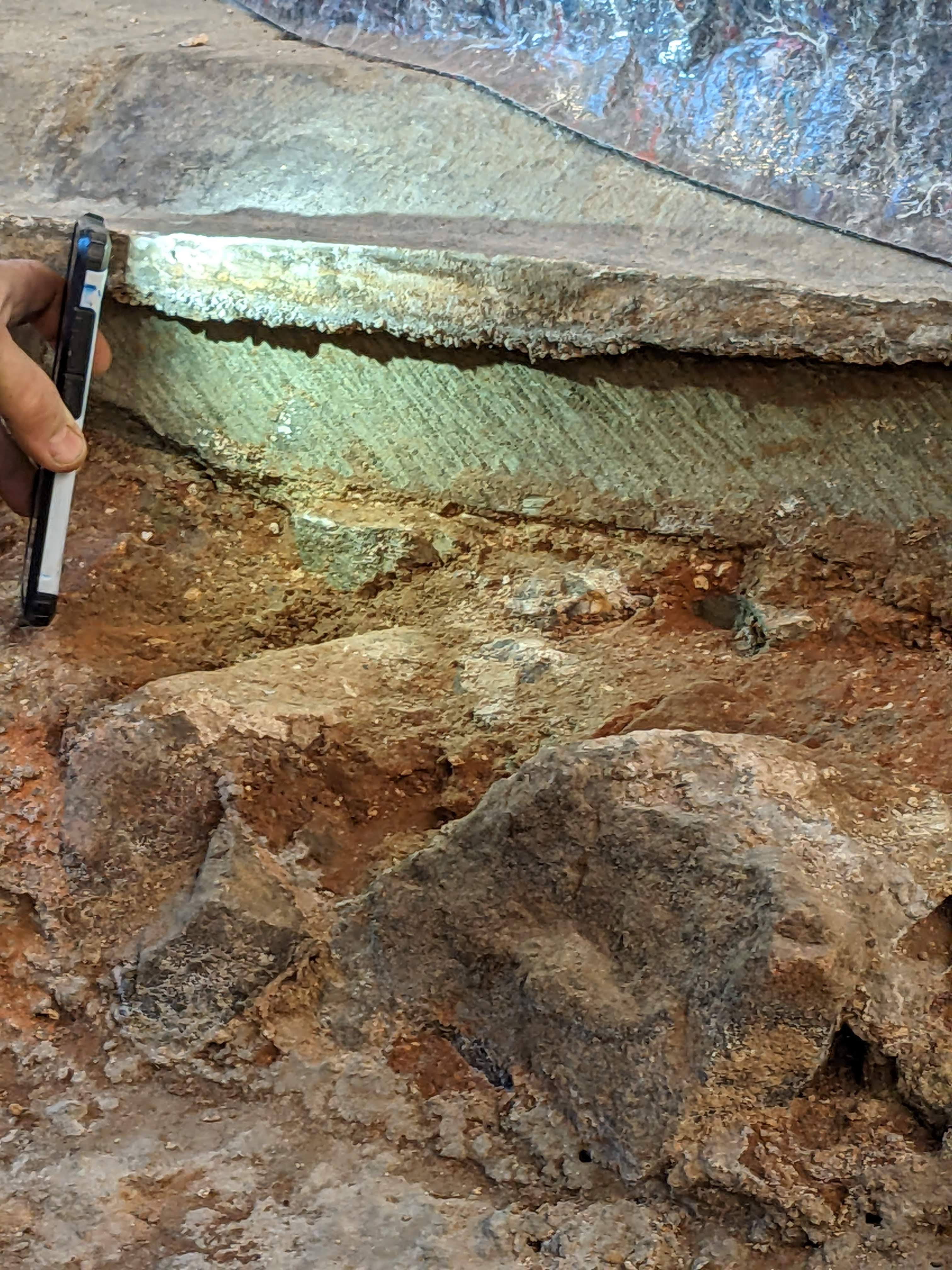 At Great Malvern Priory, the nave floor is currently being levelled so that people will no longer trip up and fall off the pew plinths that were left there when the Victorians restored the church. As part of the work, the Priory had a visit from Victoria Bryant, the diocesan Archaeological Advisor.
At Great Malvern Priory, the nave floor is currently being levelled so that people will no longer trip up and fall off the pew plinths that were left there when the Victorians restored the church. As part of the work, the Priory had a visit from Victoria Bryant, the diocesan Archaeological Advisor.
Victoria works with churches within the Diocese supporting them as changes are made – anything from repairs and reordering to new toilets and kitchens.
“The Priory’s a perfect example of what church archaeology is all about,’ she said. ‘It’s about ensuring that the church, whatever its size, works for all those who use it in the 21st century and at the same time about monitoring and recording the impact of the changes to the historic building.”
Work to the nave floor has revealed exciting new evidence of how the Priory was built. During Victoria’s visit, Archaeologist Chiz pointed out the foundations of Malvern stone which are now exposed beneath some of the huge Romanesque pillars. To those who are not historians or archaeologists, the foundations might just look like a pile of rocks, but they reveal how the builders of 1085 set about the job of building the Priory. Effectively they dug a relatively shallow hole and filled it with a load of Malvern stone before placing the base of the column on top.
The columns in the Priory are made of greensand, a soft sandstone rock with a faint green hue which comes from iron, and above ground gradually oxidises to become browner in colour. The floor clearance work has revealed the very base of some of the columns, where the original Priory floor met the columns in monastic times. The marks of the workers tools – likely to be an axe, are extraordinarily fresh and the greensand a vibrant green.
On the north side, the Victorian refurbishment included underpinning (propping up) the Romanesque columns with bricks, where they considered the early foundations to be inadequate. In some places Mediaeval floor tiles, lifted at the time of the Victorian renovation, were used as padding to support the then new floor.
So it’s ‘all go’ at the Priory. Do drop in and take a look yourself - there’s a new visitors’ leaflet while the work is taking place and information displays. Although the Priory may be a bit dusty, and slightly more noisy than usual it’s just as welcoming: ‘We’re so glad we came. What an amazing place’ said a couple recently visiting from South Wales.

